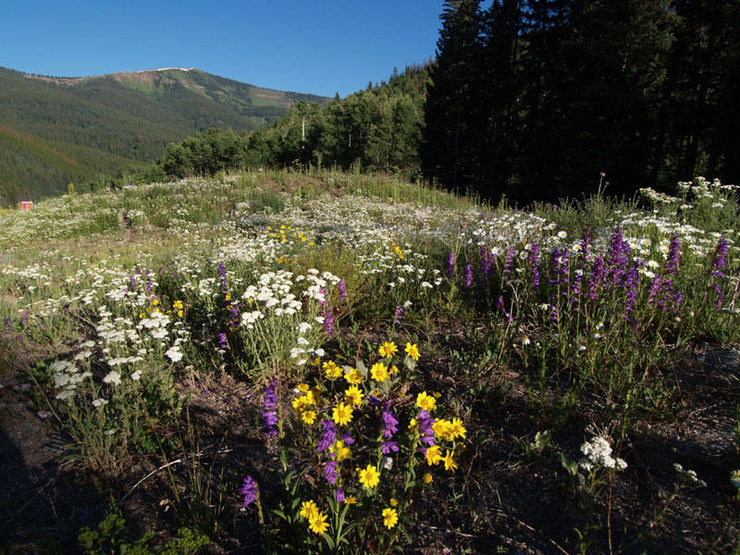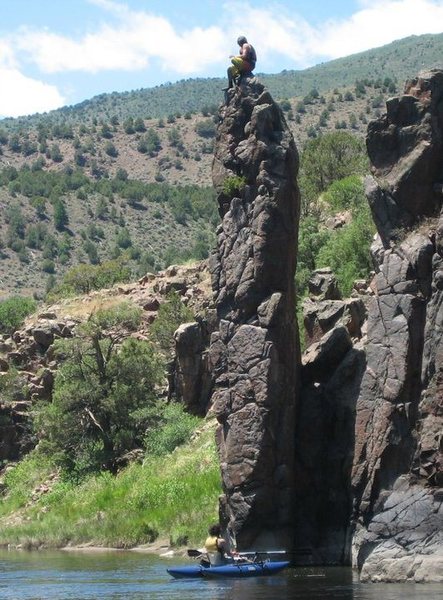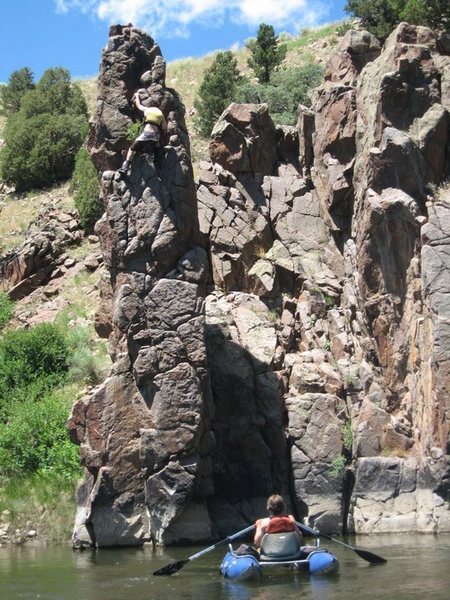Eagle/Vail/Minturn/Red Cliff
Colorado
Description
This area encompasses a geographic location with a variety of vertical type experiences. You probably have heard most about the
Vail ice and you can find that under the
CO ice/mixed section. In this section, you will find various rock cragging on sandstone, limestone, gneiss, schist, and even some granite. While this generally has little for a destination type of experience, there is still some interesting crags to find vertical pleasure.
Some of the climbing here is protected in information accessibility and locals may cringe to see non-Eagle county folks playing here. Nonetheless, we have to share amiably and symbiose.
Some of the better known areas include
Lime Park's limestone,
Wolcott's sandstone & nearby
Gilman's gneiss, but there is more for the exploring types.
Due to the increased elevation, most of the cragging in this area is limited to April to October times.
Getting There
As a well-known ski area, this general location is easy to find. I-70 accesses this area from either east or west (100 miles West of Denver). From the south, you can access this area via CO Hwy 9 (past Copper Mountain) or US 24 (through Minturn). From the north, you can access this area via CO Hwy 9 (Silverthorne) or CO Hwy 131 (Wolcott). The
ice cragging is mostly visible from I-70. Parking is challenging, since all street parking in Vail is subject to ticketing. Gilman, illegal to access, is reached via US 24 south from Minturn.
Weather
Leadville climbing website
www.40minutesfromleadville.com
Nearby Leadville
Since we split off Leadville, click
here to find Leadville crags.
Bats - conservation
See a bat on a route, give a shout. Climbers for Bat Conservation is working with climbers to understand bat ecology and why bats choose certain cracks and flakes. If you see bats, and want to tell them, here is their email (climbersforbats@colostate.edu) and their website ( climbersforbats.colostate.edu/).
Climbers for Bat Conservation is a collaboration between climbers, bat biologists, and land managers to understand where bats roost and where large populations may reside. They are interested in finding bats because a new disease, called white-nose syndrome ( whitenosesyndrome.org/), has killed millions of bats in North America. This collaboration has identified bat roosts throughout the U.S., and as far away as Norway and Bulgaria. CBC was developed by biologists who climb and they are advocates for climbing access and bat conservation. If you see bats while climbing, please let them know by emailing them at climbersforbats@colostate.edu, or visiting their website to learn more ( climbersforbats.colostate.edu/).
Rob Schorr
Zoologist, Colorado Natural Heritage Program ( sites.warnercnr.colostate.e…)
Director, Climbers for Bat Conservation
Robert.schorr@colostate.edu









Wondering if anyone has a copy of the Wolcott guide. It is out of print, and I would love to get a copy of it. Mar 13, 2016